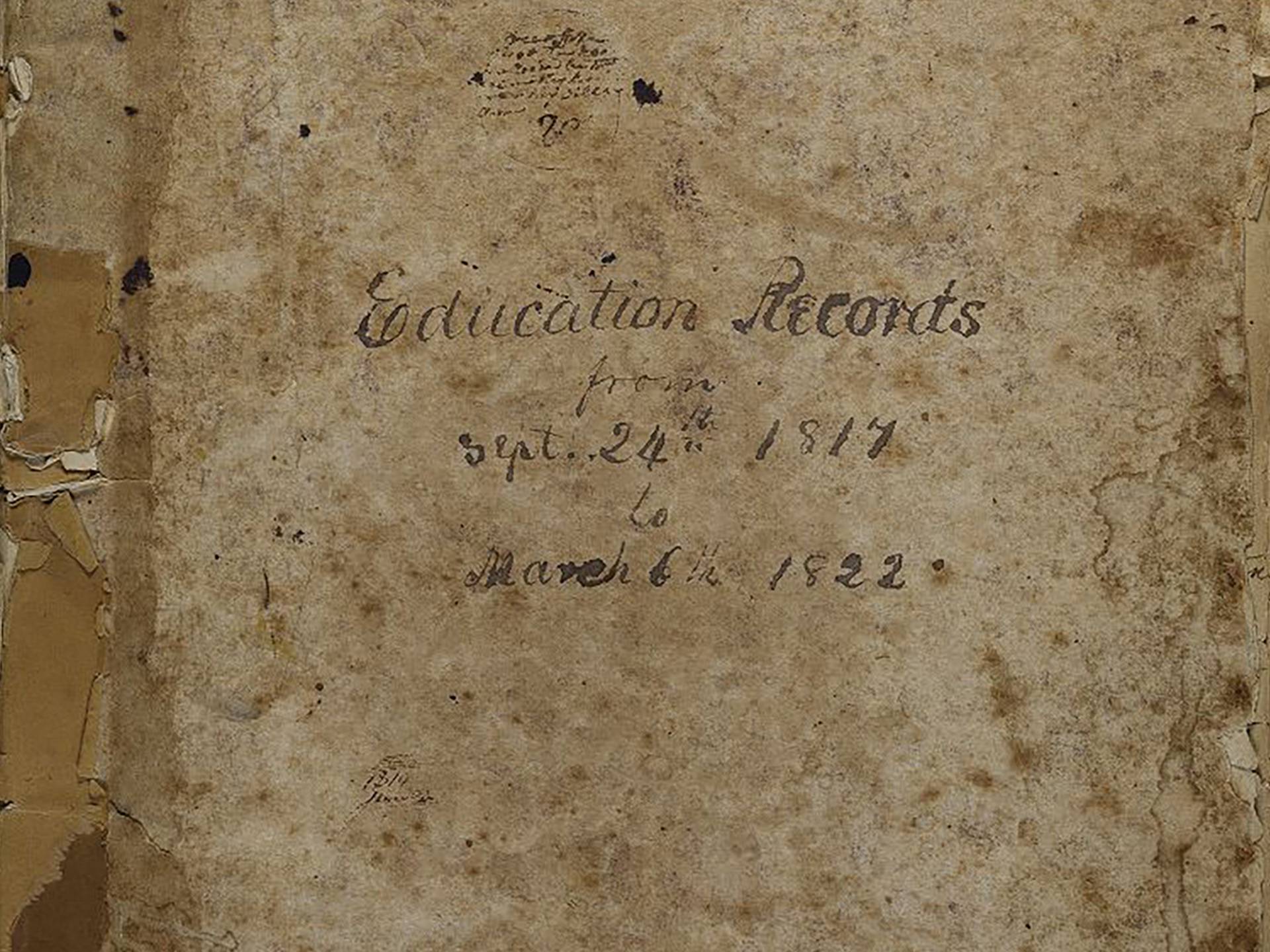In 1817, when 13 clergy and laymen met at the Hamilton, N.Y., home of Deacon Jonathan Olmstead to develop their 13 articles, giving 13 dollars and saying 13 prayers to found the Baptist Education Society of the State of New York (BESSNY) — whose educational institution would become Colgate University — they documented their discussion in a ledger. While not verbatim, said Sarah Keen, head of Colgate’s special collections and university archives, the record book “is the closest thing we have to a first-person account of what happened at that meeting two centuries ago.” Following the August 14 transfer of records from the Colgate Rochester Crozer Divinity School (CRCDS) in Rochester, N.Y., that seminal document of Colgate’s history is now part of the University’s archives and available for research.
The Rochester institution had received the record book, along with many other documents related to Colgate’s early years, after Colgate’s seminary moved and merged with the Rochester Theological Seminary in 1928. Colgate agreed to take the materials back because, after a planned August 2019 relocation, the CRCDS would be unable to care for them at their new facility.
“With both institutions in celebration of their bicentennial year, the timing is appropriate and fitting that these documents of our combined history now reside together,” said CRCDS President Angela D. Sims. “We are comforted in knowing our rich legacy in print will be stored and cared for at Colgate.”
The archival collection includes:
- Bound volumes of Board of Trustees and executive committee minutes dating back to 1822
- BESSNY treasurer’s reports from the early 1900s
- Hamilton Theological Seminary and other faculty records
- Colgate Theology Seminary catalogs
- Manuscript of a bible translation to the Kachin language of Burma
- The seal portion of a BESSNY seal press
- New York Recorder newspaper and other historical newspaper clippings
The founding record book has been digitized and is publicly accessible in the University’s digital collections.
“These are the early documents of our shared history,” said Keen. “As CRCDS evolves and changes, we appreciate that they are entrusting us with these components of our institutions’ shared history so that we can help ensure that the legacy lasts for many more years to come,”
Resources
